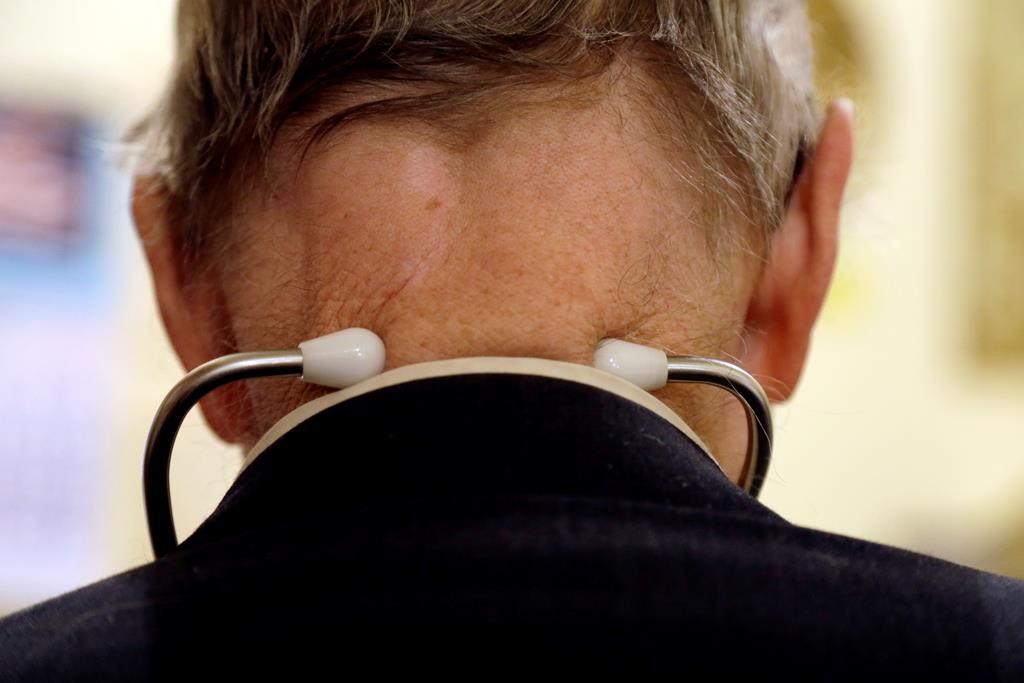At least 415,000 people in Toronto are without a family doctor, new data suggests.

The data from INSPIRE Primary Health Care released Wednesday suggests that at least 72,000 people in Toronto lost their family doctor between March 2020 and March 2022.
The data also suggests that those in the city with the lowest incomes are especially impacted.
“There are 2.2 million Ontarians without a family doctor – a significant rise from the previously reported 1.8 million in 2020,” a news release read.
Dr. Mekalai Kumanan, president of the Ontario College of Family Physicians (OCFP), said now is the time for “real change in Ontario.”
“Supporting family doctors in practice will allow them to focus on the high-quality care they provide to their patients,” Kumanan said in the release. “This can be accomplished by expanding team-based care and minimizing the administrative tasks that family doctors currently face.”
The data suggests that in Toronto, a higher proportion of individuals with the lowest incomes are without a family doctor, compared with those with high incomes.
“At least 120,700 people with the lowest incomes do not have a family doctor,” the release read. “These disparities are most pronounced in the west end, north of the city core and in Scarborough.”
The data also suggests at least 203,000 people who live in racialized neighbourhoods and 54,000 people who suffer from mental illnesses are without a doctor in Toronto.
- Landmark smoking ban that would phase out sales passes U.K. parliament
- Budget 2024: Liberals look to offset drug plan cost with higher smoking, vaping taxes
- Health task force blasted over ‘dangerous guidance’ for cancer screenings
- Preventing future pandemics goal of new U.S. partnership with 50 countries
The study also found 30,000 people living with diabetes in Toronto were without a family doctor.
According to the Ontario College of Family Physicians, Toronto would need at least 385 new family doctors focusing solely on family medicine to meet the demand.
Kumanan said “without action, it isn’t possible to reach this target.”
“On top of the current shortage, many family doctors are approaching retirement. It is critical that we take steps to support family doctors in practice,” Kumanan said.
Kimberly Moran, CEO of the OCFP, said in Toronto and across Ontario, “people are suffering from inequitable access to family doctors and this government has the ability to change the course of healthcare for millions of Ontarians.”
Moran said the recent government announcement to invest in 18 new teams is a “step in the right direction.”
“And it’s clear that we need multiple solutions if we are going to make lasting and meaningful change,” Moran said in a statement.
The OCFP released a series of recommendations they say are “solutions to ensure more Ontarians can access a family doctor.”
The OCFP said doctors should be provided with health-care team members, and the outdated digital system should be improved to “ease the overwhelming administrative burden family doctors are experiencing.”
In an email to Global News, Hannah Jensen, a spokesperson for the Ontario Minister of Health, said more than 60,000 new nurses and nearly 8,000 new doctors have registered to work in Ontario since the Ford government took office.
“Our province is also leading the country with 90 per cent of Ontarians having a family doctor or primary health care provider, but we know more needs to be done,” Jensen wrote.
Jensen said the government also announced “Your Health,” launched a medical school expansion and expanded Ontario Health Teams.
Jensen said the government has also broken “down barriers for internationally educated health-care workers,” and is allowing health-care workers registered in other provinces or territories to start work immediately in Ontario.
“In 2015, the previous Liberal government restricted entry to popular patient enrollment models such as Family Health Organizations (FHOs) and Family Health Networks (FHNs.),” Jensen said in the email. “This resulted in half the number of physicians per month being permitted to join FHOs and FHNs and limited physicians who received training with a family health team to practice within one.”
Jensen said the Ford government reversed that decision this year, and is increasing the Family Health Organization complement by 720 physicians per year.




Comments